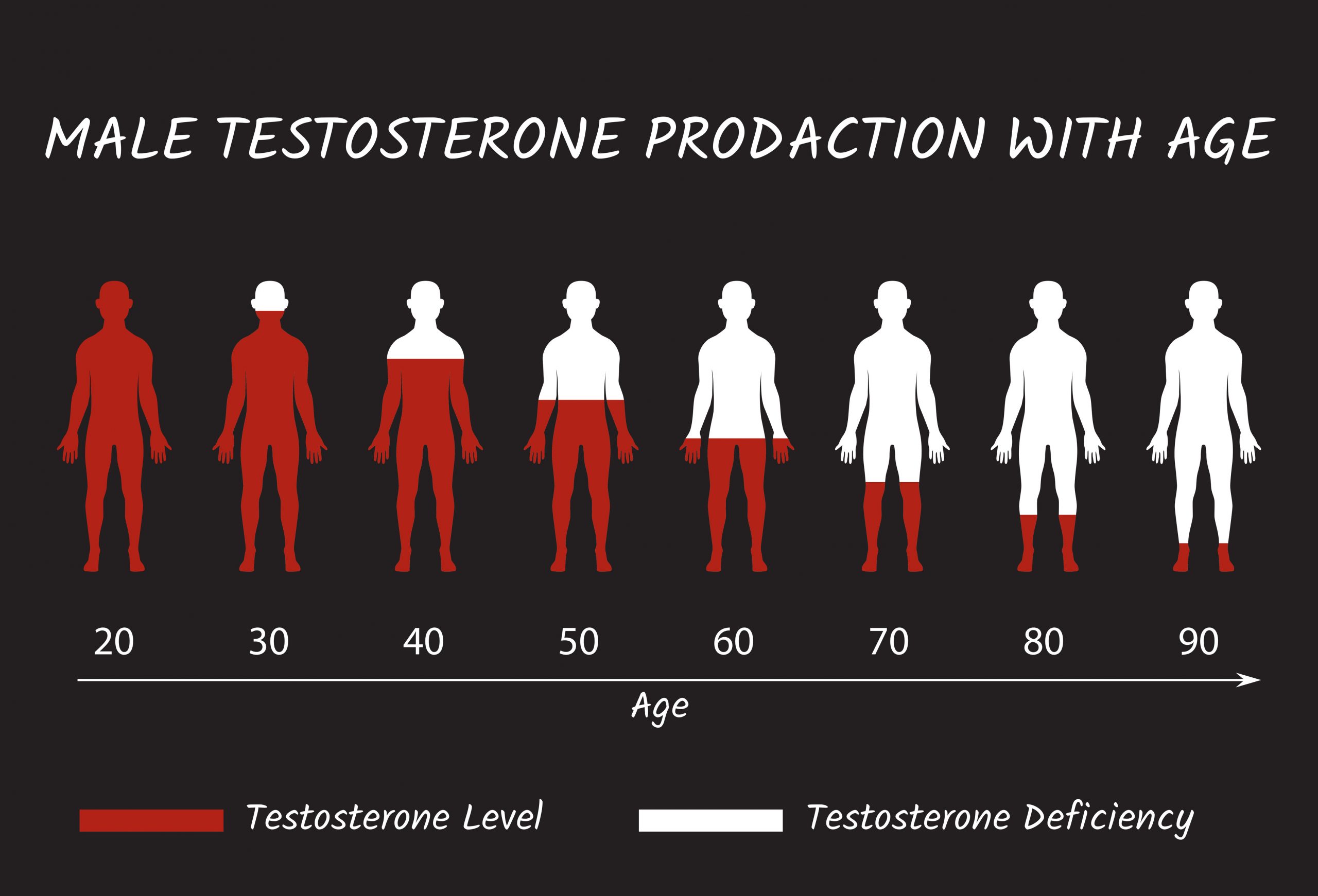Your cart is currently empty!

March 28, 2022
Gentlemen, are you feeling any of the following?
- Decreased libido and sexual desire
- Depressed mood
- Weight gain
- Decrease in lean muscle mass
- Decrease in motivation
- Hot flashes
- Gynecomastia (male breast tissue growth)
- Poor concentration
- Poor sleep quality
- Poor concentration
- Constantly tired
If the answer to any of these is yes, then you may have Low T (Low Testosterone or Male Andropause). Low Testosterone affects 4% of men 40-49 years old and that percentage increases an average of 2% for each decade as we age! Approximately 2.4 million men ages 40-69 in the United States are living with Low T, also known as androgen deficiency, and 481,000 new cases of androgen deficiency are diagnosed each year.
Low testosterone can also cause other health issues:
- Anemia (low blood count)
- Cardiovascular Disease and Hypertension
- Diabetes and Insulin Resistance
- Increased body fat move down
- Poor aging quality
Are you experiencing symptoms of low testosterone?
It is difficult and bothersome for many men to discuss issues like low sex drive and increased breast tissue, but this is a natural part of aging as our hormone production of testosterone slows down. However, there is an effective way to reverse these symptoms: TRT (Testosterone Replacement Therapy). Low testosterone treatment for men can be easily and safely obtained at the offices of Dr. Robert Fortino, the area’s premier lifestyle and low testosterone doctor. With both a Philly TRT clinic and a New Jersey TRT clinic, Dr. Fortino and his staff of professionals will help you navigate your way to a healthier you. There are many benefits to Testosterone Replacement Therapy:
- Improved Libido and Sex Life
- Improve Lean Muscle Mass and Strength
- Improved Mental Concentration and Mood
- Improved Physical Performance
- Improve Quality of Life
- Improved Overall Health
Men who treat their low testosterone with Dr. Fortino’s TRT have more energy, feel healthier, have happier moods, better love lives and feel younger once their testosterone levels are restored to their optimal level.
Frequently asked questions
What Labs Do I Need to Diagnose Low Testosterone?
Basic laboratory studies include total and free testosterone, FSH and LH. A complete metabolic panel and a complete blood count can also be included. The diagnosis of Low Testosterone or hypogonadism can be confirmed by finding:
- Low serum concentration of testosterone
- Decreased sperm in the semen
Measurement of the serum testosterone concentration with the free and total portions is usually the most important diagnostic tests for Low Testosterone. A low value usually indicates hypogonadism.
How Often Do I Get My Labs Done?
Follow-up labs are usually done in 6-8-week intervals.
How Is Low Testosterone Treated?
Both the Philly TRT clinic and the NJ TRT clinic utilize the same methods to reverse low testosterone: an effortless needle system. Not only is this method effective, but it is also convenient since it allows you the ability to tailor your replacement therapy on your time schedule.
Why Should I Inject Testosterone?
There are other methods of delivery of testosterone such as patches, creams, and pellets—but these can be expensive and difficult to use. Exposing others to the topical preparations can be potentially dangerous to them, and oral testosterone is not FDA approved and has negative side-effects on the liver. Testosterone levels also tend to fluctuate more when treated by those methods. The best and most effective way to balance your low testosterone is by injection.
What is My Dose of Testosterone?
Your dose will be calculated by Dr. Fortino. Adjustments in your dose can be made through additional consultation. However, dosing should remain consistent. Starting at 100mg per week to 10-day intervals is most optimal. Dramatically increasing your dose might have an adverse effect, because excess testosterone in your body can be converted into estrogen by an enzyme called “aromatase.”
Are There Any Side Effects to taking testosterone?
Adverse effects are rare if you maintain the correct dose and schedule. Obtaining labs and self-monitoring for any side effects provides a safe and effective treatment program. Side effects of having an extremely high of a level of testosterone can include changes in blood cholesterol, skin acne, gynecomastia, hepatitis, jaundice, elevated calcium levels, hypoglycemia, polycythemia, prostate hypertrophy, decreased spermatogenesis. With over 20 years of experience in the field of health and wellness, Dr. Fortino will guide you through your TRT journey to ensure these are avoided.
What Is the Best Injectable Form of Testosterone Available?
The dosage amount and timing for injectable testosterone will depend largely upon which ester is being used, as well as the individual’s own response to the hormone. In general, dosages will vary between 50 mg and 300 mg per injection, depending on the ester and the dosing regimen. An average injectable dose is about 200-250 mg every two weeks. Testosterone is combined with another chemical compound called an “Ester”.

An Ester is an organic compound that allows the testosterone to be released into the body. The difference between various types of Esters is the number of carbons in the Ester molecule. The more carbon molecules the longer and more sustained release the testosterone becomes; this allows you to increase the interval in between injections. Testosterone is not stored by the body for future use, so in order to maintain healthy levels, it must be administered in timed intervals and in appropriate dosages. Testosterone therapy is not a one-size-fits-all approach. Be sure to monitor your health and feelings closely and remember that even a small adjustment in dosage (either increase or decrease) can make a big difference.
Call the offices of Dr. Robert Fortino, the Low T Doctor near you, today!